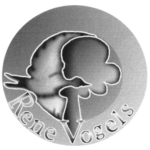On the origin of BDCA1+CD14+ myeloid population
Ghaith Bakdash, PhD
Tumor Immunology Department
Radboud university medical center
This is a report concerning the visit I made to the lab of Dr. Muzlifah Haniffa at the Institute of Cellular Medicine, Newcastle University Medical School, United Kingdom. This visit, which lasted for 3 months, was allowed by the generous Rene Vogels grant.
Dr. Haniffa is a leading researcher in the field of human DC populations and DC differentiation. Recently, she identified the human tissue homologue of CD8+/CD103+ mouse cross-presenting DCs (1). She also delineated the origin of the controversial CD14+ dermal DC subset, clearly demonstrating its divergence from monocytic origin (2). Her vast expertise in unraveling human DC progeny and the wide array of techniques developed in her lab are integral to the goal of my visit: defining the origin of the immunosuppressive BDCA1+CD14+ population that I have recently characterized.
As described in the proposal, I aimed at achieving this goal by utilizing two models: the 3D cultures of cellular spheroids and an in vitro skin model. I spent valuable time setting up both models using possible precursors of BDCA1+CD14+ cells, namely BDCA1+ DCs and CD14+ monocytes. By the end of this visit, I managed to have these two models well established and gained some initial promising results that will be the stepping stone for a full study.
In addition to performing experiments related to my project, I had the chance to participate in meetings on both lab and institution levels. Moreover, I had the chance to present my own work in one of these meetings. It was very useful getting feedback on my own work, as well as having an opportunity to get acquainted with the research being done in this part of the UK. This is also granted me the chance to communicate with fellow researchers in different departments of the institute, allowing me to establish a firm network that can be very helpful for the research I am doing and my career development as well.
I was very impressed by the financial investment and commitment to medical research in Newcastle. This is reflected by the high level of technology achieved in the research institutes. I had the chance during my visit to use top notch machines and apparatuses. Furthermore, the level of scientific research is very high, which is reflected by the scientific output of the research groups in Newcastle.
Finally, my visit to the lab of Dr. Haniffa set the foundations for a strong and strategic collaboration between the two labs. This collaboration will be aimed at performing high quality research that will eventually yield key findings in the field of tumor immunology, and eventually having these findings translated into clinical applications.
Reference List
(1) Haniffa M, Shin A, Bigley V, McGovern N, Teo P, See P, et al. Human tissues contain CD141hi cross-presenting dendritic cells with functional homology to mouse CD103+ nonlymphoid dendritic cells. Immunity 2012;37:60-73.
(2) McGovern N, Schlitzer A, Gunawan M, Jardine L, Shin A, Poyner E, et al. Human Dermal CD14(+) Cells Are a Transient Population of Monocyte-Derived Macrophages. Immunity 2014;41:465-77.